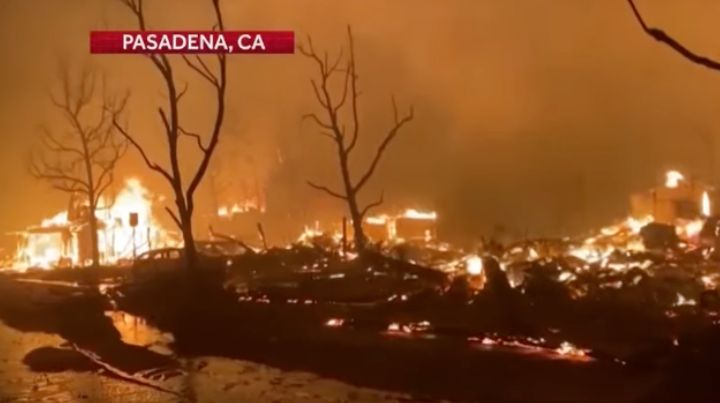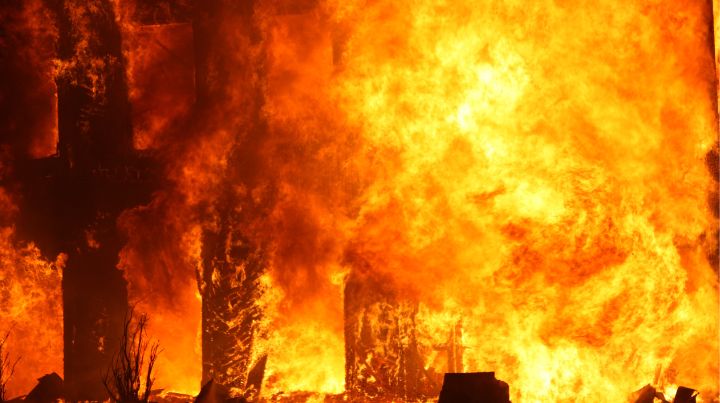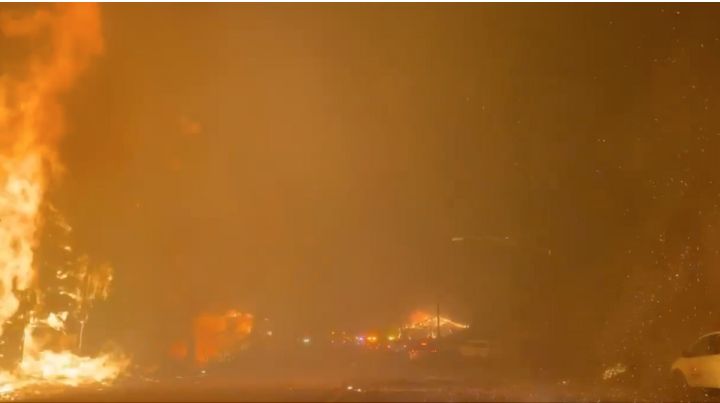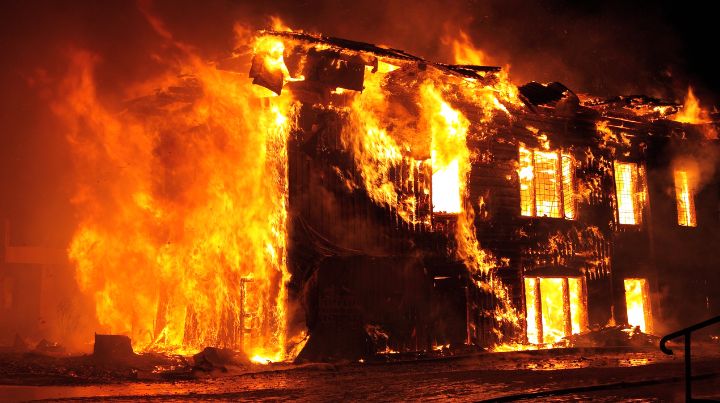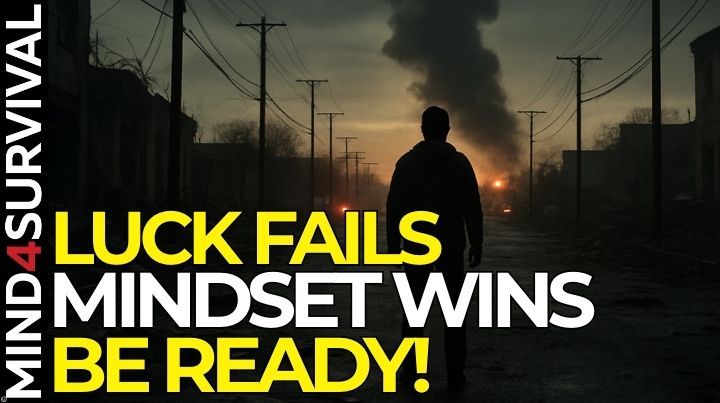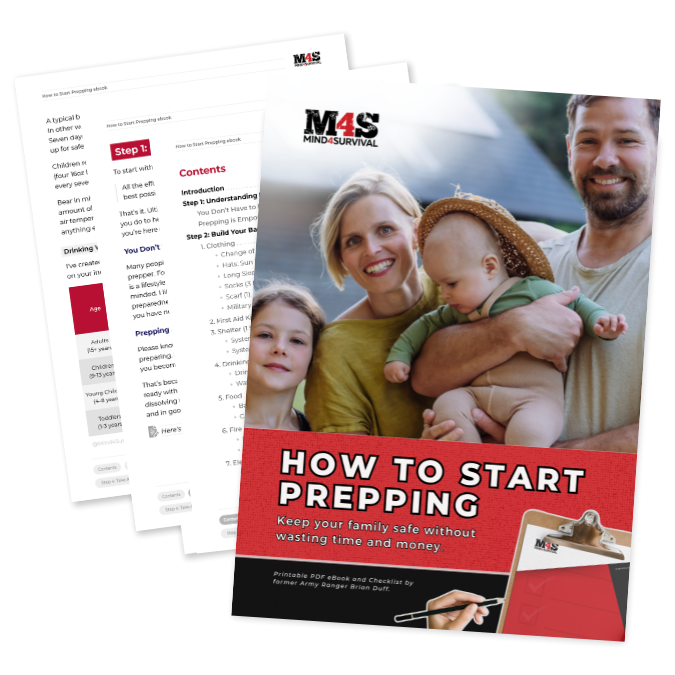Wildfire Preparedness: Protecting Your Home and Family
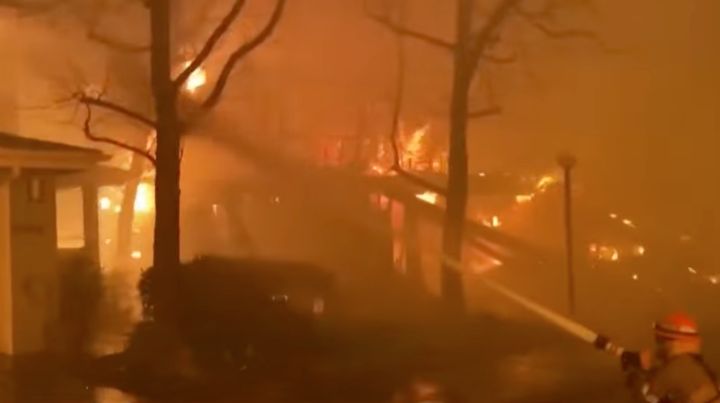

Podcast: Play in new window | Download
During my years as a firefighter in Southern California, I've seen firsthand how wildfires transform from distant threats into large, sweeping emergencies in mere hours. This reality hits especially close to home as I write this—the same canyons and hillsides where I fought my first wildland fire near the Glendale, Pasadena area back in 1989 are once again threatening the same communities—including my family who is currently under evacuation warnings. The devastating combination of Santa Ana winds gusting up to 100 mph and dry conditions creates the perfect storm for catastrophic fires, just as it has for decades in Southern California and other fire-prone areas.
My experience fighting fires in these conditions has taught me crucial lessons about home protection. I've watched homes burn that could have been saved with basic preparation, and I've seen others survive intense fires because their owners took simple precautions. The reality is stark: wildfire seasons are longer and more intense than ever, affecting communities that, due to the passage of time, have put the risk of fire danger into the far recesses of their minds.
But here's what my experience on the frontlines has taught me: you can take practical steps to protect your home and family. While we can't prevent all wildfires, I've witnessed time and again how simple actions by homeowners significantly improve a home's chances of survival. Many homes lost to wildfire aren't consumed by walls of flame – they ignite from embers that land on leaves, wood piles, roofs, and flammable materials near the house. This key insight helps us focus on the fire prevention methods that matter.
This guide breaks down wildfire preparation into simple, manageable steps based on both my firefighting experience and proven research. You don't need to be a firefighter to make your home safer. Whether you have a weekend or several months to prepare, every positive change increases your home's resilience against wildfire. I'll walk you through exactly what you need to know, starting with the most important areas around your home and moving outward to create layers of protection.
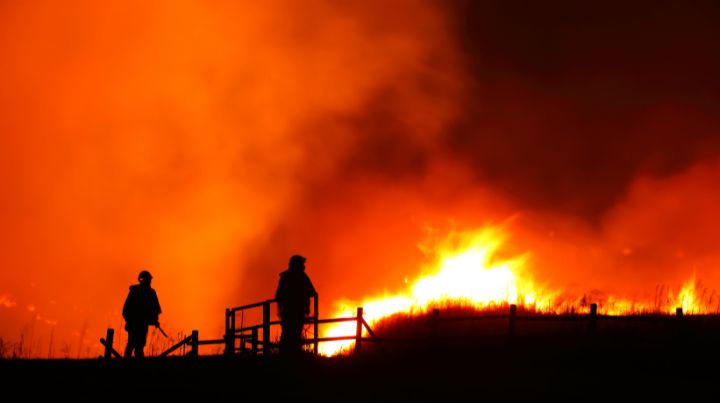
By the time you finish reading, you'll understand:
- Where your home is most vulnerable to wildfire
- Which simple changes give you the biggest safety improvements
- How to prepare your family for evacuation
- What to do when wildfire threatens your area
Let's start with the most critical area around your home—what U.Sm Forest Services call the “Home Ignition Zone.” I've seen this concept save homes repeatedly during my career, even in the face of the fierce Santa Ana winds that plague the region, and I'll show you exactly how to apply it to your property.
Understanding Your Home's Defense Zones (HIZ Made Simple)
Firefighters know that protecting your home from wildfire isn't about trying to stop an unstoppable wall of flame. It's about understanding and defending three critical zones around your house. Think of these zones as rings of protection, with your home at the center. Let me show you how to work with each one, starting with the most important.
The Immediate Zone (0-5 feet from your house) – Your Critical First Line of Defense
This zone is your home's front-line defense, and I can't emphasize its importance enough. During my years fighting fires, I've seen homes survive intense wildfires because their owners got this zone right, while their neighbors' homes burned because of simple oversights in this critical area.
Here's what you need to do in this zone:
- Clear leaves, needles, and any dead vegetation from your roof and gutters
- Remove dead plants, leaves, and mulch from around your foundation
- Keep firewood and lumber FAR from your house (I recommend moving it to your extended zone)
- Replace wood chips and mulch near your house with gravel or stone
- Remove or relocate anything that can burn: welcome mats, deck furniture cushions, etc.
- Consider replacing combustible fencing or gates that attach to your house
The Intermediate Zone (5-30 feet) – Creating Your Safety Buffer
Think of this zone as your buffer space. During fires, embers that land in well-maintained intermediate zones typically burn out without causing damage. On the other hand, though, embers landing in poorly maintained intermediate zones can ignite fires where vegetation is too dense or close together.
Focus on these key actions:
- Keep grass mowed to 4 inches or less
- Create breaks in vegetation using driveways, gravel paths, or rock gardens
- Space trees at least 18 feet apart (more on slopes)
- Remove lower tree branches up to 6-10 feet from the ground
- Don't let tree branches hang over your roof
- Choose fire-resistant plants (your local extension office can suggest options)
The Extended Zone (30-100 feet) – Your Early Warning System
While this outermost zone might seem less critical, proper management here can reduce fire intensity and give firefighters the space they need to defend homes. Remember, firefighters focus their efforts on the most savable homes when firefighting resources are stretched thin.
In this zone:
- Continue tree spacing, but you can be less aggressive
- Remove dead trees and any accumulations of fallen leaves/needles
- Keep grass mowed but it can be slightly longer
- Stack firewood here (if you must store it)
- Clear vegetation around propane tanks, sheds, or other structures
Special Considerations for Fire Prone Areas such as Southern California
Having fought fires in urban and suburban wildland interface, I need to emphasize a few extra points:
- If your home is on or near a hillside slope, extend these zones on the downhill side
- Pay special attention to canyon areas where winds can funnel flames and embers up the canyon
- During Santa Ana and other high wind conditions, even small amounts of vegetation can become dangerous
- Consider replacing wooden fences with metal or other fire-resistant materials, especially in the intermediate and immediate zones
Remember, you don't have to tackle everything at once. Start with the immediate zone – those first five feet around your house – and work your way out. Even small improvements in these zones can significantly increase your home's chances of survival during a wildfire.
Want to know if you're doing it right? Here's a simple test for homeowners: Stand at your front door and look at everything within arm's reach. If you see anything that could burn, remove it or replace it with non-combustible materials. Then step back five feet and do the same thing all the way around your house. This simple exercise can reveal vulnerabilities you might have missed.
Actionable Home Protection Steps
Here's a practical, prioritized list to harden your home against wildfire, broken down into projects you can tackle based on your time and budget.
Quick Wins (Weekend Projects)
- Clean your gutters and roof valleys of leaves and debris
- Install 1/8-inch metal mesh screens over all vents (attic, crawl space, eaves)
- Move stored items away from your house's exterior walls
- Replace worn weather stripping around doors and windows
- Remove dead vegetation near windows
- Install metal flashing around wooden fence connections to your house
Monthly Maintenance
- Check and clean gutters (especially during fall)
- Sweep decks and porches of leaves and needles
- Trim branches that overhang your roof
- Clear vegetation from around gas meters and electrical boxes
- Test your emergency generator if you have one
- Check that garden hoses are in good condition and easily accessible
Affordable Home Improvements
- Install ember-resistant gutter guards
- Replace single-pane windows with dual-pane (preferably tempered glass
- Box in eaves with fiber cement board
- Install a Class A fire-rated roof if needed (this is crucial – I've seen homes saved by good roofs)
- Add metal flashing around windows and doors
- Replace wood mulch with gravel or stone within 5 feet of your house
Professional Projects
Here's where to invest if you have the budget (prioritized by importance):
- Upgrade to a Class A fire-rated roof if you haven't already
- Replace wood siding with fiber cement or stucco
- Install external sprinkler systems (but don't rely solely on these)
- Upgrade to tempered glass windows
- Replace wooden decks with composite materials
The Often-Overlooked Details
In my firefighting experience, these smaller items often make a big difference:
- Address numbers should be metal and clearly visible from the street
- Dryer vents should have heavy-duty metal covers that close when not in use
- The chimney should have a spark arrestor with mesh screening
- Deck boards within an inch of the house should be replaced with metal flashing
- Under-deck areas should be enclosed or screened to prevent ember intrusion
A Warning About DIY
While many of these projects are suitable for homeowners, some require professional expertise:
- Roof repairs or replacement
- Major siding projects
- Electrical work
- Structural modifications
- Sprinkler system installation
Expert Tip: Document Everything
Take photos of all your improvement projects and keep receipts. After evacuation orders are lifted, this documentation can help prove to insurance companies that your home was adequately maintained. I've seen this make a significant difference in claim processing.
Remember: Focus on the projects that give you the biggest return on investment first. A clean roof and gutters with proper vent screens are more important than expensive new windows. Start with the basics and work your way up to bigger projects as time and budget allow.
Getting Your Family Ready
In my decades of professional preparedness experience, I've seen how proper preparation can mean the difference between a smooth evacuation and a dangerous last-minute scramble. Here's how to ensure your family is ready when minutes count.
Create Your Emergency Kit Your “Go Bag” should be ready before fire season starts.
For each family member, prepare:
- N95 masks (crucial for smoke protection)
- Three days of clothing
- Basic toiletries and medications
- Phone charger and backup battery
- Flashlight with extra batteries
- First aid supplies
- Three days of water (one gallon per person per day)
- Non-perishable snacks
- Cash in small bills
Pro tip: Keep your go bag light enough to carry easily. I've seen too many families struggle with oversized bags during evacuations.
Special Offer: If you'd like more insight into preparing your family for disasters, please download my free 39-page “How to Start Prepping” guide, which includes a printable “Basic Emergency Kit” checklist.
Important Documents File Create a “Grab and Go” file containing
- Insurance policies (home, auto, life)
- Property deeds and mortgage papers
- Birth certificates and passports
- Medical records and prescriptions
- Pet vaccination records
- Bank account information
- Emergency contact list
- Photos or videos of your home's contents
- USB drive with digital copies of important photos
Store these in a waterproof container that's easy to grab. Keep it near your go bag.
Family Communication Plan
- Designate an out-of-area contact as your family's check-in point
- Ensure every family member has emergency contact numbers memorized, or with them.
- Identify two meeting places: one close to home, one outside your neighborhood
- Practice sending concise text messages – they often work when calls don't
- Make sure everyone knows how to use your home's fire extinguishers
Special Considerations for Children
From my experience helping evacuated families, children need extra preparation:
- Create a simple “go bag” for each child with their comfort items
- Include their favorite snacks and activities
- Practice evacuation drills as a game to reduce anxiety
- Teach them about emergency workers and what to expect
- Ensure they know their full name, address, and important emergency contacts
- Don't worry about missing a day or two of school. You children's safety, under your care, is more important.
Pet Preparation
Don't wait until evacuation to plan for pets:
- Keep pet carriers easily accessible
- Prepare pet go bags with food, water, and medications
- Ensure pets are microchipped and wearing current ID tags
- Have current photos of your pets on your phone
- List of pet-friendly hotels or evacuation shelters
- Consider evacuation plans for large animals well in advance
Vehicle Readiness
Keep your evacuation vehicle maintained and ready:
- Gas tank always at least half full during fire season
- Emergency kit in the trunk
- Updated maps (paper and digital)
- Phone charger
- Flashlight
- Basic tools
- Spare tire in good condition
Practice Makes Perfect
I can't stress this enough—Practice your evacuation plan:
- Time how long it takes to gather everyone and leave
- Plan for and try different escape routes at different times of day
- Practice grabbing go bags and important documents
- Include pets in your drills
- Review and update your plan every six months
Special Tip:
Keep a pair of closed-toe shoes and a flashlight by everyone's bed. Too many people who are caught off guard rush from their homes in slippers or flip-flops because they don't have time to find proper shoes.
The Most Important Thing
From decades of experience, here's what matters most: When evacuation orders come, leave early. No possession is worth risking your life. Typically, people who leave early don't regret it. Unfortunately, those who wait too long often do.
Remember, preparation might seem overwhelming, but you don't have to do everything at once. Start with the basics—go bags, important documents, and a communication plan—and then build from there. The key is to start before you need it.
When Wildfire Threatens
Over the years, I've observed and been a part of many evacuations. The key to safety isn't just knowing what to do—it's understanding when to do it. Here's your action guide for when a wildfire approaches.
Understanding Evacuation Notices
Don't wait for a mandatory evacuation order. Know these terms and act early:
- Ready (Pre-evacuation) – Prepare to leave. Gather your go-bags
- Set (Voluntary Evacuation) – Be ready to leave at a moment's notice
- Go! (Mandatory Evacuation) – Leave immediately. You and your family's lives are at risk.
When You First See Smoke or Get an Alert
- Check official sources for fire information (local fire department websites, social media, apps such as the Watch Duty app)
- Alert your family members and initiate your communication plan
- Move vehicles out of garage, park facing the street
- Place your go-bags and important documents in your vehicle
- Bring pets inside and have carriers ready
- Keep your phone charged and notifications turned on
Last-Minute Home Preparation
If you have time, these actions help protect your home:
- Close all windows and doors but leave them unlocked
- Remove flammable window coverings
- Move furniture away from windows
- Shut off your gas at the meter
- Turn on exterior lights to help firefighters see your house
- Leave a note on your door stating when you left and where you're going
- Place a ladder against your house for firefighter access
The Evacuation
- Stay calm—panic is contagious
- Wear long sleeves, long pants, and sturdy shoes
- Take your planned evacuation route unless directed otherwise
- Don't try to “wait it out” – when officials say go, GO
- If trapped, call 911 immediately and stay in your vehicle
Critical Don'ts
I've seen these mistakes too often:
- Don't return home until authorities declare it safe
- Don't drive through smoke if you can avoid it
- Don't stop to photograph the fire
- Don't expect firefighters to stay and protect your home if you refuse to evacuate
Staying Informed
Monitor these sources:
- Local emergency radio stations
- Official social media accounts of fire and police departments
- Reverse 911 calls
- Emergency notification systems you've signed up for
- Your neighborhood group communications
If You Get Trapped
If evacuation routes are blocked:
- Stay in your car if possible
- Call 911
- Park in an area clear of vegetation
- Close all vehicle windows and vents
- Cover yourself with a wool blanket or jacket
- Lie on the floor of the vehicle
- Keep your headlights on so firefighters can find you
A Personal Note
If you've been following me for any time, I believe in trusting your instincts. If you feel unsafe, leave. I'd rather have you safe and your house still standing than lose either one.
Don't forget your evacuation plan only works if you actually use it. Don't wait until the last minute, and don't try to be a hero. The best way to help yourself and firefighters is to keep yourself and your family safe by leaving early.
Recovery Basics
Recovery starts long before the smoke clears. This next section will help you navigate the difficult days and weeks after a wildfire affects your area.
Before Returning Home
- Wait for official clearance to return
- Check with utility companies about service restoration
- Have proof of residence ready (ID with address)
- Bring protective equipment:
- N95 masks
- Heavy-duty gloves
- Sturdy boots
- Eye protection
- Long sleeves and pants
- Battery-powered flashlight
- Prepare yourself mentally
First Safety Check
When you first return:
- Watch for downed power lines
- Smell for gas leaks
- Look for smoke or embers (especially in attics and crawl spaces)
- Check for concrete or metal damage that could indicate structural problems
- Document everything with photos and video
- If anything seems unsafe, call authorities and wait outside
Working with Insurance
- Contact your insurance company immediately
- Document all damage before cleaning anything
- Keep all receipts for temporary housing and expenses
- Take detailed photos and videos
- Don't make permanent repairs until your adjuster has assessed the damage
- Keep a detailed log of all communications with your insurance company
- Consider hiring a public adjuster if you face challenges
Meeting Basic Needs
Immediate priorities:
- Safe drinking water
- Temporary housing
- Medication replacement
- Basic toiletries and clothing
- Emergency food supplies
- Pet care needs
Finding Help
Know where to turn:
- FEMA (if declared a federal disaster)
- Red Cross
- Local emergency management office
- Religious organizations
- Community support groups
- State emergency services
- Small Business Administration (for business owners)
Emotional Recovery
This is often overlooked but crucial:
- Acknowledge that emotional recovery takes time
- Watch for signs of stress in children
- Connect with others who understand
- Consider professional counseling
- Join community support groups
- Give yourself permission to grieve losses
Supporting Your Community
Recovery is a community effort:
- Check on elderly neighbors
- Share resources and information
- Volunteer with local recovery efforts
- Attend community planning meetings
- Support local businesses affected by the fire
A Personal Note
As someone who's dealt with various disasters, I want you to know that feeling overwhelmed is normal—especially if experiencing disasters is unfamiliar to you. Disaster recovery isn't linear—some days will be harder than others. Focus on one step at a time, and don't hesitate to ask for help. Your community is stronger together, and every recovered home makes the whole neighborhood more resilient.
Remember to document everything, take care of yourself and your family first, and know that recovery takes time. The community you rebuild can be even stronger than before, but it requires patience, support, and careful planning.
The Bottom Line on Living with Wildfire
As a preparedness professional and former firefighter, I've learned that wildfire preparedness isn't just about protecting structures—it's about preserving lives, memories, and communities. The steps we've covered in this guide aren't just theoretical; they're proven strategies that work.
Remember these key points:
- Your home's survival often depends on what you do long before a fire starts
- The first 0-5 feet around your house is your critical defense zone
- Having a practiced evacuation plan can save your family's lives
- Early evacuation is always the right choice
- Recovery is a marathon, not a sprint—take it one step at a time
But the most important lesson I've learned is that resilient communities are built on prepared households. When you take steps to protect your home and family, you're also helping your neighbors and first responders. Every home that's properly prepared gives firefighters a better chance to save not just that house but the entire neighborhood.
As our fire seasons grow longer and more intense, these preparation steps become even more crucial. Don't wait for smoke on the horizon to start preparing. Start as soon as possible, even if it's just clearing leaves from your gutters or creating a family evacuation plan.
The reality is that those living in fire-prone areas must adapt to living with wildfire. But that doesn't mean living in fear. It means living with awareness, preparation, and confidence in knowing you've taken the proper steps to protect what matters most—you, your loved ones, and your home.
Remember—when it comes to wildfires, an ounce of prevention truly is worth a pound of cure.
What are your experiences with wildfires? What would lessons have you learned? Do you have any questions? Let me know in the comments below.
Additional Resources:
- Home Fire Safety and Preparedness
- Evacuation List Items You May Overlook
- Grid Down Fire Safety Considerations
- National Interagency Fire Center
Stay safe,

Related Articles
FREE Guide
Read the Best Seller
Join Mind4Survival
Stay informed by joining the Mind4Survival! 100% Secure! 0% Spam!
Affiliate Disclosure...
Mind4Survival is a free, reader supported information resource. If you make a purchase through our link, we may, at no cost to your, receive an affiliate commission.
Do You Want To Be Ready No Matter What?
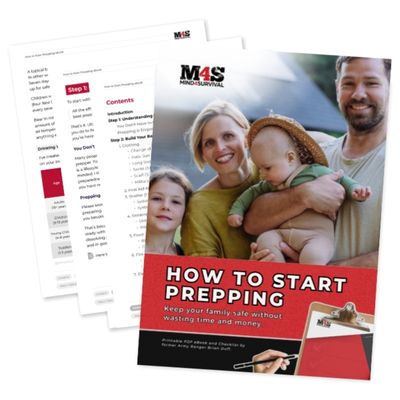
Download our free 39-page guide with interactive, 7-Day Emergency Kit Checklist and take the first step toward real preparedness.
- Know exactly where to start.
- Save time and money.
- How-to build a complete Basic Emergency Kit.
- Level up your safety and security.
Join Mind4Survival
Stay informed by joining the Mind4Survival! 100% Secure! 0% Spam!

